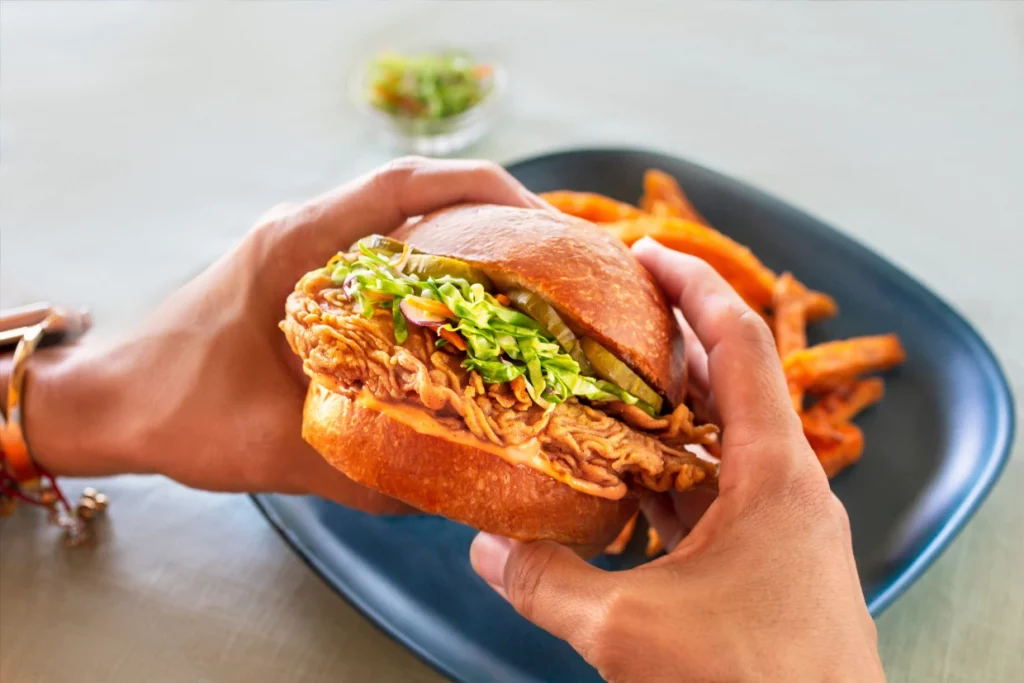
Americans could soon eat chicken grown in a lab from cultured animal cells rather than raised at a farm or facility. The U.S. Food & Drug Administration (FDA) that the environment-friendly chicken made by California-based Upside Foods is safe to eat, although it is not yet fully approved for sale.
“Our goal is to support innovation in food technologies, while always maintaining the production of safe food as our priority,” the FDA said. “Human food made with cultured animal cells must meet the same stringent requirements, including safety requirements, as all other food.”
The idea behind the firm’s production plan is to use animal cell culture technology to take living cells from chickens, then grow those cells in a controlled environment. The business walked the FDA through its production process, the establishment of cell lines and cell banks, manufacturing controls, and all components and inputs.
Before it can sell its products, Upside still needs a grant of inspection from the United States Department of Agriculture Food Safety and Inspection Service (USDA-FSIS) from the Food and Drug Administration (FDA). The food itself will also require a mark of inspection from USDA-FSIS.
The FDA coordinates with USDA-FSIS to ensure the food is appropriately regulated and labeled.
UPSIDE Foods CEO and founder Dr. Uma Valeti, a cardiologist, started the business while working for the Mayo Clinic, growing human heart cells in a lab. He called the new product a “watershed moment in the history of food,” in a statement, CBS News reported.
CBS News reported that the company’s California facility could produce more than 50,000 pounds of chicken yearly. The FDA added that it is ready to work with more firms on developing cultured animal cell food and production processes.
“We encourage firms to have these conversations with us often and early in their product and process development phase, well ahead of making any submission to us,” the FDA said. According to the agency, multiple firms working on foods using cultured animal cells are already talking with the FDA.
Cultured meat promises to change how we eat and help solve some of the big problems of a crowded planet.
In a few years, you might serve your food with meat grown from animal cells in a factory, rather than on a farm.
Over the past decade, cultured meat has evolved from a few pioneers to more players, working towards the common goal of making meat derived from animals a thing of the past.
With this building momentum, the commercialization of cultured meat in Europe and the US seems inevitable. To prepare for its arrival, it’s important to start thinking about the impact the technology will make, how it will be regulated, and whether people will actually want to eat it.
“In time, I believe that cultured meat could fundamentally change the way most meat is produced in Europe,” said Peter Verstrate, COO of the Dutch company Mosa Meat. Verstrate co-founded Mosa Meat with Mark Post, the scientist behind the world’s first lab-grown burger. The company aims to be one of the first to sell cultured meat in European restaurants and supermarkets.
The environmental benefits of cultured meat are still tough to predict. According to some estimates, the shift could reduce methane emissions and decrease water and land use by over 95%.
Growing meat directly from animal cells could also reduce the need for farmers to dose livestock with antibiotics, which contribute to the ever-increasing antibiotic resistance crisis, and with growth hormones, which are controversial for their impact on human health.
Most cultured meat companies are trying to produce their versions of beef. Many players, including Mosa Meat, the Israeli firm Future Meat, and US-based Upside Foods, expect to launch their products worldwide in the coming years.
HealthDayNews
More information and Tips: USDA y LABIOTECH
